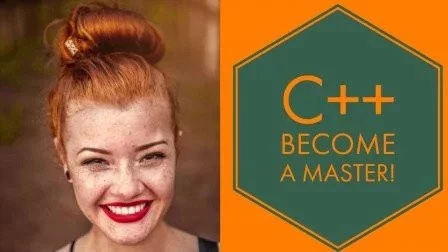Finding the largest of three numbers is a fundamental exercise in C programming. This program helps beginners learn how to use conditional statements effectively and understand the flow of decision-making in code. Learning this concept is crucial because it lays the foundation for more advanced programs, such as comparing values in arrays or determining the maximum value in a dataset.

with hands-on learning.
get the skills and confidence to land your next move.
In this tutorial, we will write a complete C program to find the largest of three numbers. Each line of the code will be explained in detail so you understand how it works. We will also highlight common mistakes beginners make and provide tips for writing clear and correct programs.
Using if-else Statements to Find the Largest Number
The most common method for finding the largest of three numbers in C is using nested if-else statements. Here is a complete example:
#include <stdio.h>
int main() {
int num1, num2, num3;
printf("Enter first number: ");
scanf("%d", &num1);
printf("Enter second number: ");
scanf("%d", &num2);
printf("Enter third number: ");
scanf("%d", &num3);
if (num1 >= num2 && num1 >= num3) {
printf("%d is the largest number.\n", num1);
} else if (num2 >= num1 && num2 >= num3) {
printf("%d is the largest number.\n", num2);
} else {
printf("%d is the largest number.\n", num3);
}
return 0;
}In this program, the line #include <stdio.h> includes the standard input-output library, which is necessary to use printf() and scanf(). Three integer variables num1, num2, and num3 are declared to store the user input. The scanf() function reads the numbers entered by the user.
The first if statement checks whether num1 is greater than or equal to both num2 and num3. If this condition is true, num1 is printed as the largest. If not, the else if statement checks whether num2 is greater than or equal to the other two numbers. If true, num2 is printed. If neither condition is true, the else block executes and prints num3 as the largest. This ensures that all possible scenarios are covered.
Using the Ternary Operator for Three Numbers
You can also find the largest number using the ternary operator for a more concise code:
#include <stdio.h>
int main() {
int num1, num2, num3, largest;
printf("Enter first number: ");
scanf("%d", &num1);
printf("Enter second number: ");
scanf("%d", &num2);
printf("Enter third number: ");
scanf("%d", &num3);
largest = (num1 >= num2) ? ((num1 >= num3) ? num1 : num3) : ((num2 >= num3) ? num2 : num3);
printf("%d is the largest number.\n", largest);
return 0;
}In this program, the ternary operator is used to compare numbers efficiently. The expression (num1 >= num2) ? ((num1 >= num3) ? num1 : num3) : ((num2 >= num3) ? num2 : num3) works as follows: first, it checks if num1 is greater than or equal to num2. If true, it compares num1 with num3 and assigns the larger value to largest. If false, it compares num2 with num3 and assigns the larger value. This method is compact but slightly more complex for beginners to read.
Common Beginner Mistakes
Beginners often make the following mistakes when comparing numbers:
- Forgetting to handle equality, which leads to wrong results when two or more numbers are the same.
- Writing multiple separate
ifstatements withoutelse, which can produce multiple outputs instead of just one. - Using
=instead of==in comparisons, causing assignments instead of proper checks. - Failing to declare all variables or reading input incorrectly with
scanf(), which can result in runtime errors.
To avoid these problems, always include equality checks when needed, use if–else structures to control logic flow, double-check comparison operators, and make sure variables are declared and inputs are read correctly.
FAQs
Q1: Can this program handle floating-point numbers?
Yes. Change the variable types from int to float or double. The comparison logic remains the same.
Q2: Why do we use >= instead of > in comparisons?
Using >= ensures that if two numbers are equal, the program still identifies one of them as the largest correctly.
Q3: Can this logic be extended for more than three numbers?
Yes. For more numbers, you can use multiple nested if-else statements or a loop to iterate through the values.
Q4: Is the ternary operator better than if-else?
For beginners, if-else is easier to understand. Ternary operators are concise but can be harder to read when dealing with multiple numbers.
Conclusion
Finding the largest of three numbers is a key exercise for beginners in C programming. It teaches decision-making, conditional logic, and structured coding practices. By understanding both the if-else method and the ternary operator approach, beginners can gain confidence in writing more complex programs. Start experimenting by modifying the program to handle more numbers or different types of input to strengthen your skills in C programming.
References & Additional Resources
- Kernighan, Brian W., and Dennis M. Ritchie. The C Programming Language. 2nd Edition, Prentice Hall, 1988.
- GeeksforGeeks: Find Largest of Three Numbers – Beginner-friendly tutorial with examples.
- TutorialsPoint: C if-else Statements – Guide to decision making in C.
- Programiz: Beginner C Programs – Collection of beginner-friendly examples.







